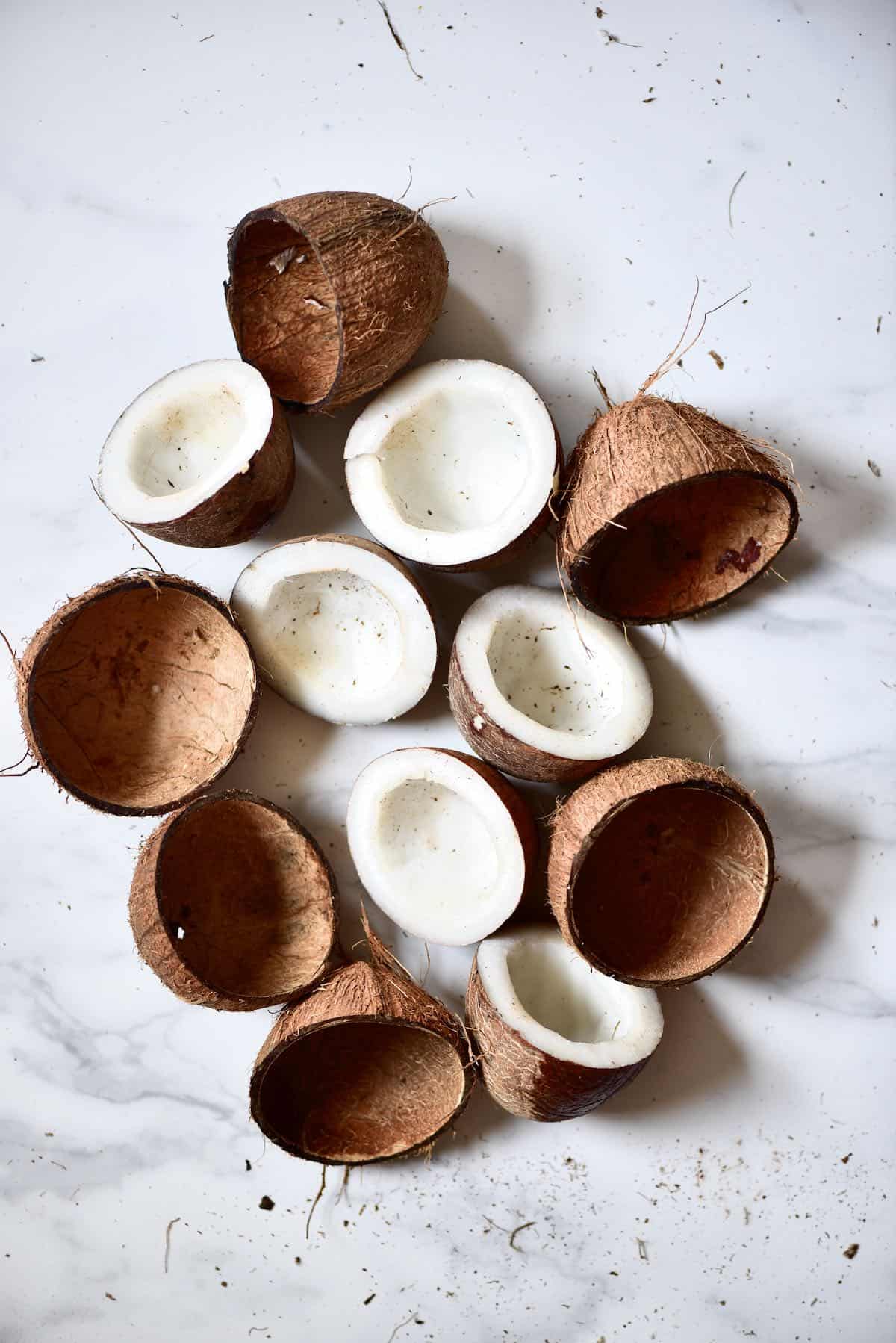

Articles
How To Store Kimchi After Opening
Modified: August 16, 2024
Learn the best methods for storing kimchi after opening in this informative article. Follow these tips to keep your kimchi fresh and flavorful for longer.
(Many of the links in this article redirect to a specific reviewed product. Your purchase of these products through affiliate links helps to generate commission for Storables.com, at no extra cost. Learn more)
Introduction
Welcome to the wonderful world of kimchi! This traditional Korean dish has gained immense popularity globally, thanks to its unique flavors and health benefits. Made from fermented vegetables, such as cabbage, radishes, and cucumbers, kimchi is not only delicious but also packed with probiotics and nutrients.
While you may have already enjoyed the tangy and spicy flavors of kimchi, you might be wondering how to properly store it after opening. The good news is that with the right techniques, you can ensure the longevity and quality of your favorite kimchi.
In this article, we will guide you through the process of storing kimchi effectively, whether it’s in your pantry, refrigerator, or freezer. Let’s dive in and explore the best practices for keeping your kimchi fresh and full of flavor!
Key Takeaways:
- Properly storing kimchi is essential to maintain its flavor, texture, and health benefits. Whether in the pantry, refrigerator, or freezer, airtight containers and proper temperatures are key to preserving the magic of kimchi.
- Regularly checking for spoilage, consuming within a reasonable timeframe, and experimenting with fermentation time are crucial for maintaining the quality and flavor of stored kimchi. Embrace the versatility of kimchi and enjoy its vibrant flavors in various dishes!
Read more: How To Store Bacon After Opening
Understanding Kimchi
Before we delve into the specifics of storing kimchi, it’s important to understand what kimchi is and how it is prepared. Kimchi is a traditional Korean dish that has been enjoyed for centuries. It is typically made from fermented vegetables, which undergo a process called lacto-fermentation.
The main ingredient in kimchi is usually napa cabbage, but other vegetables like radishes, cucumbers, and carrots can also be used. The vegetables are seasoned with various spices and seasonings, including garlic, ginger, red chili pepper flakes, and fish sauce.
The lacto-fermentation process gives kimchi its unique tangy and pungent flavor. During fermentation, beneficial probiotic bacteria, such as Lactobacillus, convert sugars in the vegetables into lactic acid, which acts as a natural preservative. This helps to not only enhance the flavor but also extends the shelf life of kimchi.
It’s worth noting that kimchi can have different variations and regional variations depending on the ingredients and preparation methods used. Some variations might include additional ingredients like daikon radish, green onions, or even seafood.
Now that we have a better understanding of what kimchi is and how it’s made, let’s move on to the importance of properly storing kimchi to maintain its quality.
Why Proper Storage is Important
Proper storage of kimchi is crucial to maintain its flavor, texture, and overall quality. Kimchi is a fermented food, which means it is susceptible to spoilage if not handled correctly. Here are a few reasons why proper storage is essential:
- Prolonging Shelf Life: Kimchi can last for months or even years when stored properly. The fermentation process creates an acidic environment that inhibits the growth of harmful bacteria and molds. By storing kimchi correctly, you can extend its shelf life and enjoy it over a longer period.
- Preserving Flavor and Texture: Kimchi is known for its distinct and complex flavors. Proper storage helps preserve these flavors by preventing excessive oxidation and maintaining the right balance of acidity. Additionally, storing kimchi correctly ensures that it maintains its desired texture, with the vegetables retaining their crispness.
- Maintaining Health Benefits: One of the reasons kimchi is highly regarded is its probiotic content. Probiotics are beneficial bacteria that promote a healthy gut. By storing kimchi properly, you can help preserve the beneficial bacteria and maintain the health benefits associated with consuming kimchi.
- Preventing Contamination: Improper storage can lead to contamination of the kimchi with unwanted bacteria or molds. This can not only alter the flavor but also pose health risks if consumed. Proper storage techniques help minimize the risk of contamination and ensure the safety of the kimchi.
Now that we understand the importance of proper storage, let’s explore the steps to prepare kimchi for storage and the various storage methods available.
Preparation for Storing Kimchi
Before you can begin storing kimchi, there are a few steps you need to follow to ensure its quality and longevity. Here’s what you need to do:
- Know the Freshness of Kimchi: If you’ve purchased kimchi from a store, check the expiration date to gauge its freshness. If you’ve made kimchi at home, note the date it was fermented. Freshly made kimchi tends to have a vibrant flavor, while older kimchi may have mellowed in taste.
- Transfer Kimchi to Airtight Containers: To preserve the flavors and prevent oxidation, it’s important to transfer the kimchi to airtight containers. Glass jars with tight-fitting lids or food-grade plastic containers work well for this purpose. Make sure the containers are clean and sterilized before transferring the kimchi.
- Leave Some Headspace: When storing kimchi, leave some headspace in the containers to accommodate the gases produced during the fermentation process. As kimchi continues to ferment, carbon dioxide will be released, and without enough space, the pressure can cause the container to burst.
- Pack the Kimchi Firmly: Pack the kimchi tightly in the containers to remove any air pockets. This helps to prevent unwanted bacteria or molds from developing. Use a clean utensil to press down the kimchi and remove any air bubbles.
- Seal the Containers Properly: Ensure that the containers are tightly sealed to prevent air from entering. This helps to maintain the anaerobic environment necessary for the fermentation process and extends the shelf life of the kimchi.
By following these preparation steps, you are setting yourself up for successful kimchi storage. Now, let’s explore the different storage methods available for kimchi.
Storing Kimchi in the Pantry
While refrigeration is the most common method of storing kimchi, it is also possible to store kimchi in the pantry under specific conditions. Here’s how you can store kimchi in your pantry:
- Choose the Right Temperature: Kimchi is best stored in a cool environment with moderate humidity. The ideal temperature range for pantry storage is between 50°F (10°C) and 70°F (21°C). Avoid storing kimchi in areas that are too warm, as it can promote spoilage.
- Find a Dark and Dry Spot: It’s important to keep kimchi away from direct sunlight and moist areas. Exposure to sunlight can alter the flavors and degrade the quality of the kimchi. Look for a dark and dry spot in your pantry, away from sources of heat or moisture.
- Use Opaque Containers: When storing kimchi in the pantry, it’s best to use opaque containers that block out light. Exposure to light can cause the kimchi to degrade and lose its vibrant colors. Choose airtight containers made of glass or food-grade plastic.
- Check for Spoilage Regularly: Unlike refrigerated kimchi, kimchi stored in the pantry is more susceptible to spoilage. It’s important to check the containers regularly for any signs of spoilage, such as mold growth or off-smells. If you notice any changes, discard the kimchi immediately.
- Rotate and Consume Time-Sensitive Kimchi: Certain types of kimchi, such as ones with higher water content or less fermentation time, are more time-sensitive and can spoil faster. It’s a good practice to rotate these kimchi varieties and consume them within a shorter timeframe.
While storing kimchi in the pantry is possible, it’s important to note that the shelf life will be shorter compared to refrigerated kimchi. It’s recommended to consume pantry-stored kimchi within a few weeks to maintain its quality.
Next, let’s explore the most common method of storing kimchi – in the refrigerator.
Store opened kimchi in an airtight container in the refrigerator. Press down on the kimchi to remove any air pockets and ensure it is fully submerged in the liquid to maintain its freshness.
Read more: How To Store Caulk After Opening
Refrigerating Kimchi
The most common and recommended method of storing kimchi is refrigeration. Refrigerating kimchi helps to slow down the fermentation process and preserve its flavors and texture for an extended period. Here are the steps to refrigerate kimchi:
- Choose the Right Temperature: Set your refrigerator temperature to approximately 32°F (0°C) to 39°F (4°C). This optimal temperature range helps maintain the quality and freshness of the kimchi. Avoid storing kimchi at higher temperatures, as it can cause the fermentation process to continue at a faster rate.
- Use Airtight Containers: Transfer the kimchi to airtight containers, such as glass jars or food-grade plastic containers, before placing them in the refrigerator. Ensure that the containers are properly sealed to prevent any odors from permeating the kimchi or other food items in the fridge.
- Label and Date the Containers: To keep track of the freshness of different batches of kimchi, label each container with the date it was prepared or stored. This helps you identify the older batches and consume them first before moving on to the newly stored ones. Freshness is key when it comes to enjoying kimchi at its best!
- Store Kimchi Away from Strong Odors: Kimchi has a strong aroma, so it’s important to store it away from other strong-smelling foods in the refrigerator. This prevents the kimchi from absorbing unwanted tastes and odors. If possible, designate a specific area or shelf for storing kimchi.
- Consume within a Reasonable Timeframe: While refrigeration helps to prolong the shelf life of kimchi, it’s still recommended to consume it within a reasonable timeframe. Generally, kimchi can remain fresh in the refrigerator for several months, with the flavor and quality gradually evolving over time.
Refrigerating kimchi not only helps to keep it fresh and flavorful but also allows you to enjoy the versatility of using kimchi in various recipes. The chilled kimchi adds a refreshing and tangy twist to salads, sandwiches, stir-fries, and more!
Now that you know how to store kimchi in the refrigerator, let’s explore another storage option – freezing kimchi.
Freezing Kimchi
Freezing kimchi is another method you can use to store it for a longer period. While freezing can alter the texture and taste of kimchi slightly, it allows you to extend its shelf life for several months. Here’s how you can freeze kimchi:
- Transfer to Freezer-Safe Containers: Place the kimchi in freezer-safe containers, ensuring they are airtight to prevent freezer burn. It’s recommended to divide the kimchi into smaller portions or use individual freezer bags to make it easier to thaw and use later.
- Remove Excess Liquid: Kimchi tends to release liquid during freezing, which can affect the texture. Before freezing, you can gently squeeze out the excess liquid from the kimchi to help maintain its texture when thawed.
- Label and Date the Containers: Just like refrigerated kimchi, it’s important to label the containers with the date they were stored. This allows you to keep track of the storage time and prioritize the consumption of older batches.
- Store in Freezer: Place the containers of kimchi in the freezer, making sure they are well-sealed. It’s recommended to store kimchi towards the back of the freezer, where the temperature is the most consistent.
- Thawing and Using Frozen Kimchi: When you’re ready to use frozen kimchi, transfer it to the refrigerator to thaw overnight. Avoid thawing at room temperature to prevent the kimchi from becoming too soft. Once thawed, you can use the kimchi in various dishes, although the texture may be slightly softer.
While freezing kimchi is a convenient way to store it for longer periods, keep in mind that the texture and crispness may be compromised. Therefore, it’s best to use thawed kimchi in cooked dishes like stir-fries, soups, or kimchi pancakes, where the texture is less noticeable.
With proper freezing and thawing techniques, you can enjoy the flavors and benefits of kimchi even during times when fresh kimchi is not readily available.
Now that you know how to store kimchi in different ways, let’s explore some essential tips for maintaining the quality of your stored kimchi.
Tips for Maintaining Kimchi Quality
To ensure the best quality and flavor of your stored kimchi, here are some useful tips to keep in mind:
- Avoid Cross-Contamination: When handling kimchi, use clean utensils and avoid introducing any contaminants. This helps to prevent unwanted bacteria growth and maintain the quality of your kimchi.
- Do Not Double-Dip: When serving kimchi, use clean utensils each time and avoid double-dipping. This prevents the introduction of harmful bacteria into the remaining kimchi.
- Keep Containers Sealed: Whether storing kimchi in the pantry, refrigerator, or freezer, make sure the containers are tightly sealed to prevent air, moisture, or odors from entering. This helps to maintain the quality and flavor of the kimchi.
- Rotate and Consume: If you have multiple batches of kimchi, it’s a good idea to rotate them. Use older batches first to ensure that you are consuming kimchi at its best and preventing any spoilage or loss of flavor.
- Check for Spoilage: Regularly inspect your stored kimchi for any signs of spoilage, such as mold growth, sliminess, or off-smells. If you notice any changes or signs of spoilage, discard the affected portion immediately.
- Store Kimchi at Proper Temperatures: Whether in the pantry, refrigerator, or freezer, it’s important to store kimchi at the appropriate temperatures. This ensures that the fermentation process is controlled and helps to maintain the desired flavors and texture.
- Experiment with Fermentation Time: The longer kimchi ferments, the more pungent and tangy it becomes. If you prefer a milder flavor, consider refrigerating or freezing it earlier in the fermentation process to maintain a more subtle taste.
By following these tips, you can maximize the shelf life and maintain the quality of your favorite kimchi. Remember, kimchi is a versatile ingredient that can be enjoyed in various dishes, so have fun experimenting and incorporating it into your meals!
Now, armed with this knowledge, you can confidently store your kimchi and enjoy its delicious flavors whenever you crave it.
Happy kimchi storing!
Conclusion
Kimchi is a beloved dish that offers a delightful mix of flavors, health benefits, and cultural heritage. To fully enjoy the flavors of kimchi, it’s crucial to store it properly after opening. Whether you choose to store kimchi in the pantry, refrigerator, or freezer, following the right techniques will help maintain its quality and extend its shelf life.
Refrigeration is the most common method of storing kimchi, as it slows down the fermentation process and keeps the flavors intact. Storing kimchi in the pantry is possible but requires careful attention to temperature and humidity levels. Freezing kimchi is another option for preserving it for an extended period, although the texture may slightly change.
Regardless of the storage method, it’s essential to transfer kimchi to airtight containers, label them with dates, and properly seal them to prevent oxidation and contamination. Regularly checking for spoilage and consuming kimchi within a reasonable timeframe will ensure that you enjoy it at its best.
By following the tips provided in this article, you can maintain the quality, flavor, and health benefits of your stored kimchi. From salads to stir-fries, kimchi adds a burst of tangy and spicy goodness to your dishes. So, embrace the versatility of kimchi and let your taste buds revel in its vibrant flavors.
Now that you have the knowledge and tools to store kimchi after opening, it’s time to embark on this flavorful journey. Whether you’re a kimchi enthusiast or a newfound fan, enjoy the deliciousness and cultural richness that kimchi brings to your table.
Remember, proper storage is the key to preserving the magic of kimchi, so don’t let it go to waste. Happy kimchi storing!
Frequently Asked Questions about How To Store Kimchi After Opening
Was this page helpful?
At Storables.com, we guarantee accurate and reliable information. Our content, validated by Expert Board Contributors, is crafted following stringent Editorial Policies. We're committed to providing you with well-researched, expert-backed insights for all your informational needs.















0 thoughts on “How To Store Kimchi After Opening”